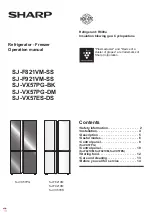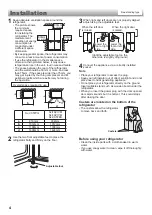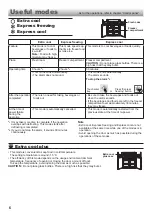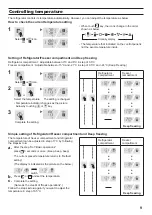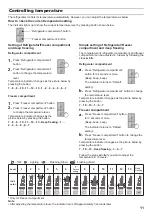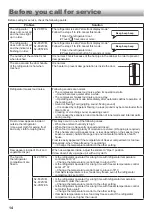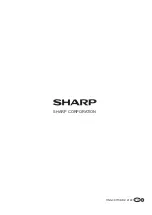
3
Disposal
■
Ensure that the refrigerator presents no danger to
children while being stored until disposal. (e.g. remove
the door to prevent child entrapment.)
■
This refrigerator should be disposed appropriately.
Take the refrigerator to a professional recycling plant
for
fl
ammable refrigerant and insulation blowing
gases.
Transportation
■
When you install or move
your refrigerator, use
curing mat to protect the
fl
oor from being damaged.
■
Carry the refrigerator by
holding the handles located
on the rear and the feet of
the bottom. If you lift up the
refrigerator improperly, it
may cause injury.
CAUTION
In use
■
Do not touch the compressor unit or its peripheral
parts, as they become extremely hot during operation
and the metal edges may cause injury.
■
Do not touch foods or metal containers in the freezer
compartment with wet hands. This may cause
frostbite.
■
Do not open or close the door when somebody put
a hand near the door. There is a risk that the other
people may catch their
fi
ngers in the door.
■
Do not put oversized object in the pockets of the door.
If the object falls down from the pockets, it may cause
injury.
■
Make sure to handle the glass shelves with care to
install or uninstall. If you drop the glass shelves, it
may break or cause injury.
rear
bottom
rear
bottom
Trouble
■
If you smell something burning, pull out the power
plug immediately. Then ask a service agent approved
by SHARP for service.
■
In case of gas leak, ventilate the area by opening
window. Do not touch the refrigerator or the power
socket.
Care and Cleaning
■
Unplug the refrigerator
fi
rst to prevent electric shock.
■
Do not splash water directly on the outer cabinet or
the interior. This may lead to rusting and deterioration
of the electrical insulation.

